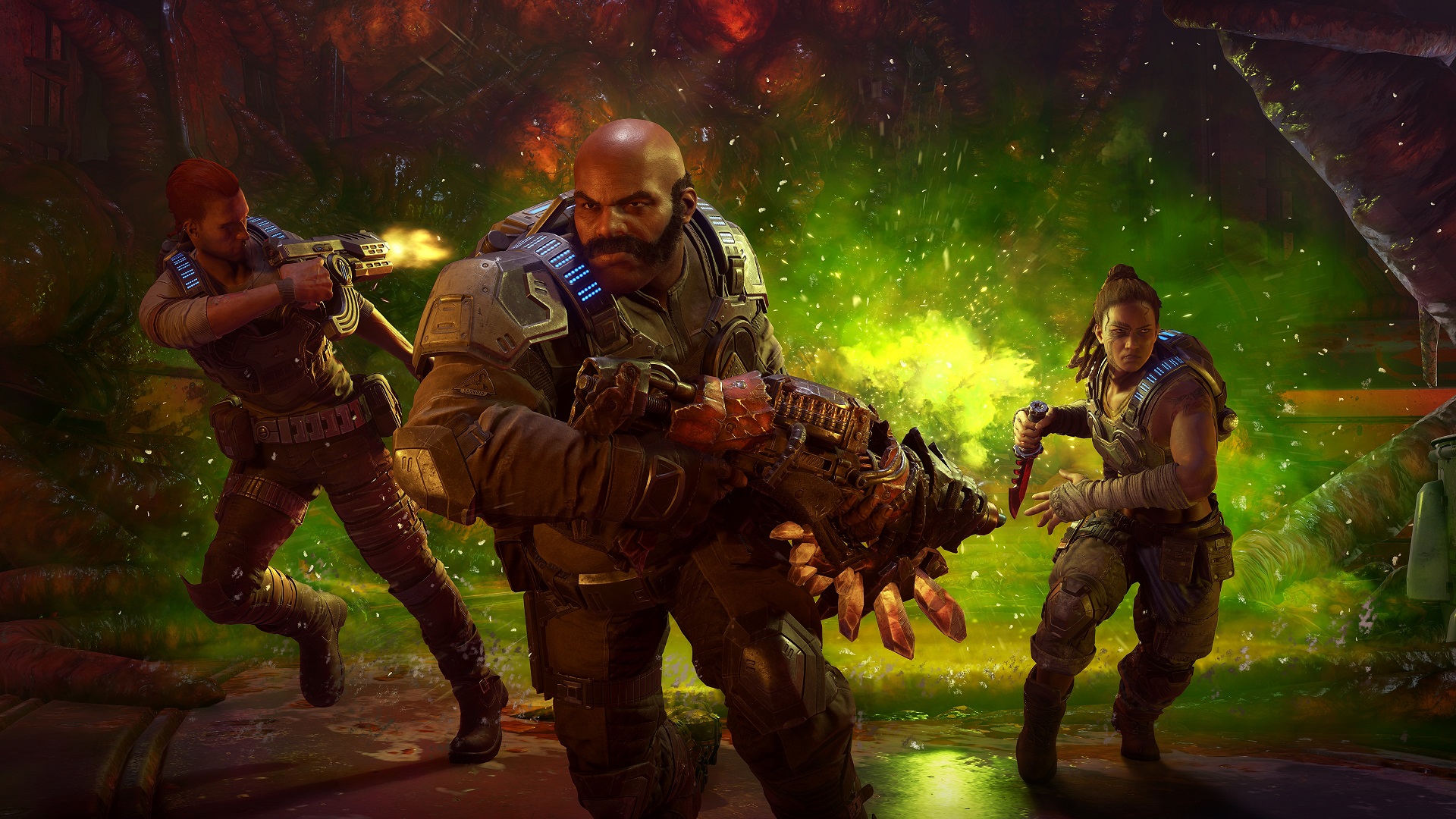Hands-on at E3
In some ways, Gears 5‘s Escape mode is a subversion. This series has been so entrenched in Horde mode ever since Gears of War 2, you and all your teammates hunkered down in the, well, trenches. Stay immobile, pop up at opportune times, keep everything at a distance.
Escape is the opposite of that, but it scratches the same itch in a satisfying way. In Escape, teams of three are dropped into the center of a Locust hive. They plant a poison bomb to exterminate the hive, and then they rush away. The name is very literal.
The result is that you’re always pushing forward, because a poison cloud is always at your back. Move too slowly and you’ll inadvertently exterminate yourself. Move too quick and your teamwork might break down. There’s a balance to be struck.
Communication is particularly paramount in Escape because some of the typical Gears trappings aren’t present. Ammunition isn’t readily available. Some directions are dead ends. It’s not quite a linear march straight through the enemy forces. There’s more strategy involved — even if Escape doesn’t aim to be among the likes of Rainbow Six Siege when it comes to team-oriented shooters.
There’s a class component that draws easy comparison to Overwatch, though. Each character serves a different role, which is mostly defined by a slow-building ultimate ability. Keegan drops ammo for the whole group, Lahni has an electric knife for brutal melee attacks, and Mac provides cover behind a giant shield. Knowing when these ultimates are best used is something that surely comes with experience.
For the seasoned groups of veterans, Escape has plenty of opportunities to ratchet up the difficulty. There are seven modifier categories, and they do things like make enemies tougher and have ammo boxes yield even fewer bullets. You can pick the level of challenge, and more modifiers means more experience points. Escape has a progression system for unlocking character customization options and whatnot. (It’s currently unknown if Escape has its own progression or if it feeds into the overall multiplayer progression that’s shared across modes.)
We finished our playthrough in eight minutes, which feels like a good length for this sort of mode. It felt longer considering the urgent nature of trying to escape. Any more time and the tension might’ve started to overwhelm and grate a bit. But, after one round, I found myself thinking “Yeah, I’ll play more of this when Gears 5 comes out in September.” It’s perfectly adequate as far as these sorts of things go — and that’s perfectly acceptable.


